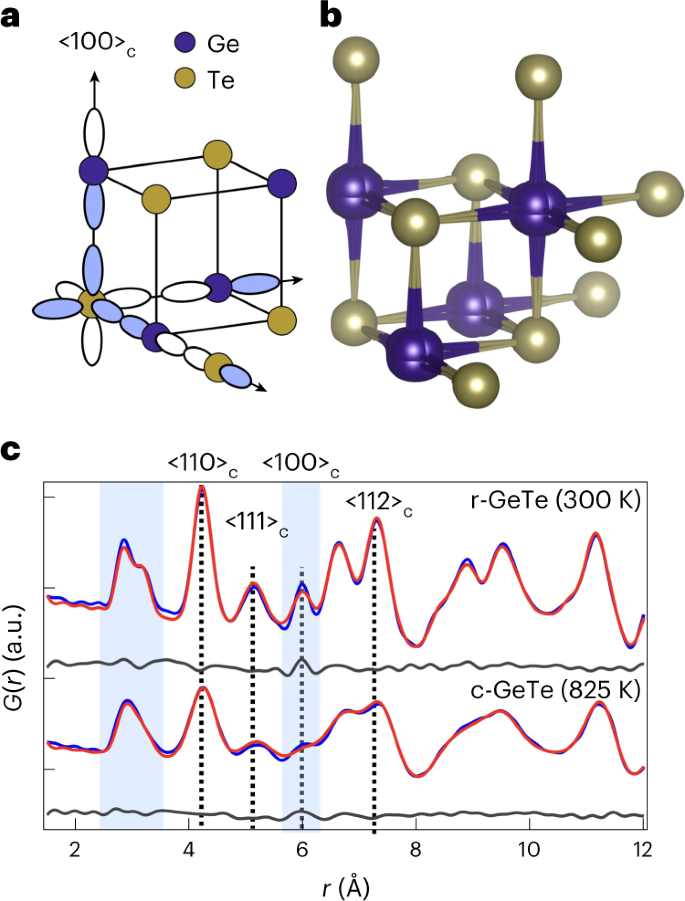2023-03-21 オークリッジ国立研究所(ORNL)
<関連情報>
- https://www.ornl.gov/news/neutron-camera-method-captures-atomic-scale-activity-flash
- https://www.nature.com/articles/s41563-023-01483-7
動的結晶構造解析による立方晶GeTeの自発的異方性の解明 Dynamic crystallography reveals spontaneous anisotropy in cubic GeTe
Simon A. J. Kimber,Jiayong Zhang,Charles H. Liang,Gian G. Guzmán-Verri,Peter B. Littlewood,Yongqiang Cheng,Douglas L. Abernathy,Jessica M. Hudspeth,Zhong-Zhen Luo,Mercouri G. Kanatzidis,Tapan Chatterji,Anibal J. Ramirez-Cuesta & Simon J. L. Billinge
Nature Materials Published:20 February 2023
DOI:https://doi.org/10.1038/s41563-023-01483-7

Abstract
Cubic energy materials such as thermoelectrics or hybrid perovskite materials are often understood to be highly disordered1,2. In GeTe and related IV–VI compounds, this is thought to provide the low thermal conductivities needed for thermoelectric applications1. Since conventional crystallography cannot distinguish between static disorder and atomic motions, we develop the energy-resolved variable-shutter pair distribution function technique. This collects structural snapshots with varying exposure times, on timescales relevant for atomic motions. In disagreement with previous interpretations3,4,5, we find the time-averaged structure of GeTe to be crystalline at all temperatures, but with anisotropic anharmonic dynamics at higher temperatures that resemble static disorder at fast shutter speeds, with correlated ferroelectric fluctuations along the <100>c direction. We show that this anisotropy naturally emerges from a Ginzburg–Landau model that couples polarization fluctuations through long-range elastic interactions6. By accessing time-dependent atomic correlations in energy materials, we resolve the long-standing disagreement between local and average structure probes1,7,8,9 and show that spontaneous anisotropy is ubiquitous in cubic IV–VI materials.



